One Great Trip to Corsica and Sardinia
While prepping to open his newest restaurant, Bastia, chef-partner Tyler Akin sought inspiration on the French and Italian islands — and found a perfect bowl of spaghetti con la bottarga.
Welcome back to One Great Trip, where a cool and curious traveler shares a recent stand-out adventure — including some of the best things they ate, drank, and did — to help inspire your own travels.
Before Tyler Akin opened Le Cavalier, a modern French brasserie at the Gilded Age-era Hotel DuPont in Wilmington, Delaware, he spent entire days researching the setting’s history, poring over old photos and menus at nearby Hagley Museum & Library. (The gorgeous restaurant was on Food & Wine’s inaugural “Global Tastemakers” list this year.)
The Philadelphia-based chef-partner, who runs Form-Function Hospitality, creating bar and restaurant concepts for hoteliers and developers, is set to open Bastia next week. The coastal Mediterranean restaurant at new Hotel Anna & Bel in Philadelphia’s Fishtown neighborhood centers around seafood (and also in-season vegetables and spritzes) which all pair perfectly with the property’s surprising European coastal vibe. True to form, while he was preparing to open, he did his research.
Earlier this year, Akin spent time off the coasts of France and Italy — on the islands of Corsica and Sardinia — to watch farmer’s make sheep’s milk cheese, visit a bottarga production facility, tour vineyards, and generally taste his way around this beautiful, sun-soaked corner of the Mediterranean.
Below, the chef shares his best tips on how to get there, what to do, and (most importantly) where to eat, including a Sunday market in Bastia that might alone be worth the trip.
Where: Corsica, France and Sardinia, Italy
With the upcoming opening of our restaurant Bastia at Hotel Anna & Bel in Philadelphia’s Fishtown neighborhood looking to these two islands as primary influences, it made sense to get there and immerse for a bit.
Arrived by:
This was a great opportunity to use French Bee, which is a low-cost carrier that connects Newark with Paris-Orly. Orly is where flights from Paris to Corsica originate—daily to the capital city (and birthplace of Napoleon!) Ajaccio, or to our namesake Bastia on the opposite coast of the island. My wife and I had a great experience with the premium class of a French Bee flight returning from Paris last year. Their fares in this section typically fall between the economy and premium economy rates on a major carrier like United or American, but the experience is very similar in terms of space and amenities.
Although my first night was booked in Bastia, I had to come in through Ajaccio due to connection timing. You should absolutely rent a car in Corsica because a) the driving is incredibly fun, if at times treacherous and b) besides an historic railway that connects a few cities in northern Corsica, it’s pretty much the only way to get around.
For the next leg, I boarded my (Hertz) rental car on a ferry from Bonifacio to Santa Teresa Gallura on the northern tip of Sardinia. There are several routes in both directions each day—it’s a 45-minute ride across the straits separating the two islands and about 40 euros each way with a car. Various destinations in Corsica and Sardinia can be reached by ferry from Marseilles, Porto di Civitavecchia, Livorno, Palermo, etc. Sardinia can also be accessed by air to its capital Cagliari, but never direct from the States. The two islands are also connected by longer ferries between Ajaccio and Porto Torres.
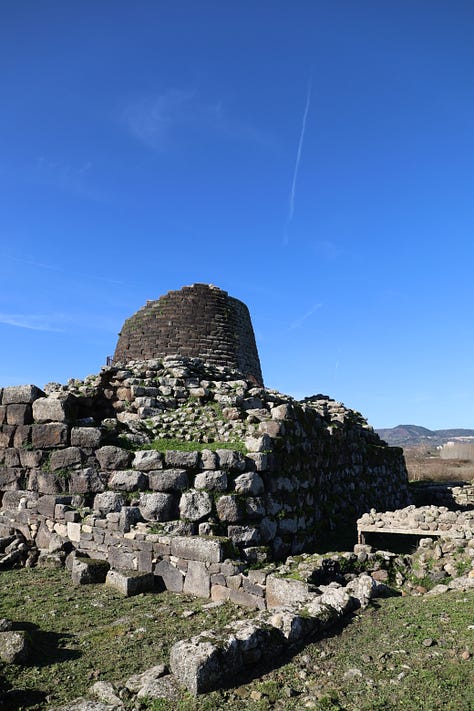
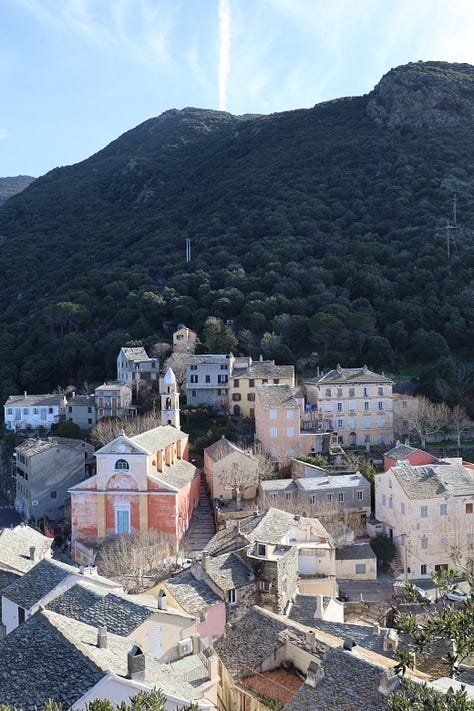
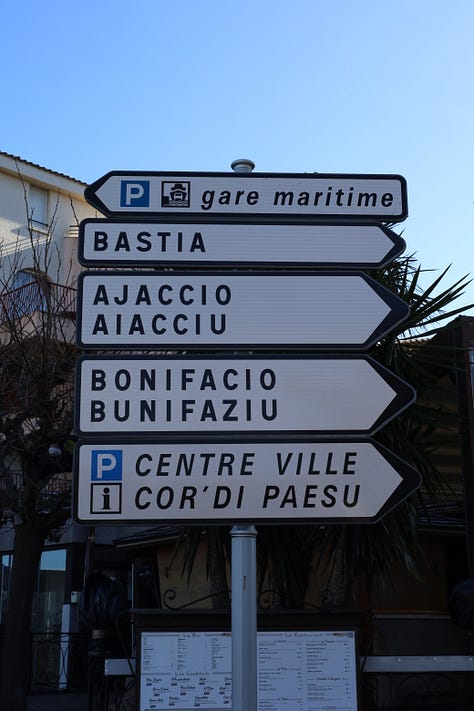
Stayed:
In the off-season many hotels are shuttered, so I stayed at some great Airbnbs along the way. In Cagliari I stayed at the magnificent Palazzo Doglio, and in Ajaccio I stayed at the recently-renovated and very cool Hotel San Carlu Citadel. One AirBnB I booked was inside the citadel at Bonifacio and had the most breathtaking view and historic feel; I think it ruined Airbnb for me forever. It was seriously magical, and cheap at 80 euros a night.
Ate:
It’s worth building an itinerary around being in Bastia on Sunday morning so you can attend the incredible market there—you can try many of the specialties beloved by Corsicans. In addition to stunning produce and mobile butchers with beautiful veal and pork, there are rotisseurs (offering chicken and pork), charcutiers (especially Les Délices de Castellu by Chef Alexia Guillen), and vendors with incredible honeys and marmalades. But the main event is the pastry offerings. Savory beignets stuffed with brocciu cheese or laced with zucchini, and sweet ones dusted in sugar, including my favorite: apple. Just amazing. Also not to miss: fiadone (a cheesecake made with brocciu and lemon zest, not dissimilar from the Basque style. Migliaccioli, which are griddled little pancakes studded with brocciu also shouldn’t be missed. Brocciu is clearly the thickest thread here: like a firm ricotta in texture, but funkier due to the sheep’s and/or goat’s milk with which it’s made.
Bastia also boasts some great restaurants by Pierre-Francois Maestracci, whose family is steeped in wine-making in Patrimonio—the cradle of excellent Corsican wine production. He leads the Slow Food movement in Corsica and runs Taberna Ribella and Le Minotaure, the two most excellent restaurants in Bastia. By his side at these places and his Ribella brewery biologique in Patrimonio wine country is Chef Antoine Acquaviva, who paid his dues under Alain Ducasse.
A stop in Corte, the old inland capital and university town with a stunning citadel that defies gravity, must include a stop at Frittelle Curtinese. Their beignets and herb pie (a chard-stuffed pastry that in this case is made like a hand pie but is often elsewhere wedged out of a large round) are the best there are.
Bonifacio is a must-see, but don’t expect many restaurant options in the off-season. I cooked myself dinner in my Airbnb while there.
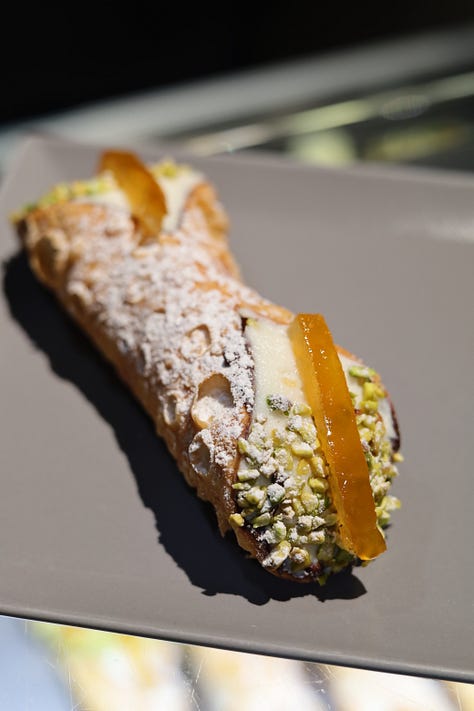
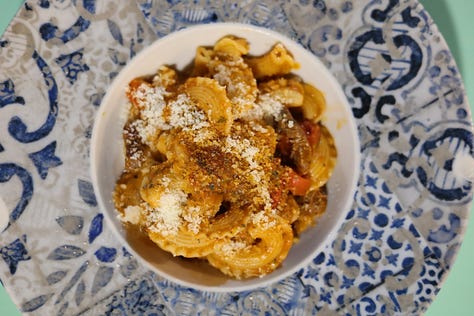

And on to Sardinia …
You will find the most perfect bowl of pasta, spaghetti con la bottarga, at Focacceria Creuza De Ma. It’s a short walk from the ferry pier and you’ll find the alchemy of spaghetti, pasta water, olive oil, bottarga, and a little crushed red pepper.
There are so many amazing places to eat in Sardinia, but it’s worth focusing on Cagliari because it’s a magical city full of delicious things. Framento makes world class pizzas with lots of fermentation in the dough. Sabores is a really excellent wine bar featuring producers we’d call “natural” and a great way to start a night that might lead to dinner at Antica Cagliari where the pastas are excellent. Su Cumbidu is a giant restaurant in a cellar-like space and offers tons of Sardinian hits. It’s a great place to grab some roasted suckling pig if you don’t have the time to visit an agriturismo spit-roasting the whole animal. The gelato at I Fenu is as good as it gets. Finally, and hat tip to Letitia Clark for many of these recommendations, Distrizio Pasticceria has masterful cannoli and maritozzi that blew my mind.
Adventured:
Plan to spend a couple of days tooling around Cap Corse, the peninsula north of Bastia. In-season, Centuri boasts the country’s best spiny lobsters and sea urchins. Pino and Nonza are the perfect cliffside villages, perched above and cascading down toward the Mediterranean. A hike around Luri while crossing from the east to west side of Cap Corse is a great way to spend an afternoon. The driving in Cap Corse is life-affirming, as you wind along cliffs that fall a thousand feet to gorgeous waters.
If you are super adventurous, the T20 to D69 route from Corte to Quenza and Zonza on your way south to Porto Vecchio and then Bonifacio rewards brave drivers with unbelievable vistas. It is a seriously harrowing route through the rugged mountains of Corsica’s interior, where peaks quickly reach higher elevations than anywhere in the continental U.S.
In Cagliari, the San Benedetto Market is incredible. Fishmongers and bottarga vendors dominate the first floor of this sprawling indoor market, and the second floor is packed with really beautiful produce and baked goods. There’s also a very good grocer stall to stock up on pantry items that U.S. customs hopefully treat with mercy. San Benedetto made me wonder why our clementines aren’t quite as sweet, our greens not quite as green, our tomatoes not quite so perfect. Among pretty much everything else grown in Sardinia and sold at the market.
The nuraghe of Sardinia are Bronze Age megaliths from the second and first millenia BCE that litter the island. With 7000 fully documented, there are countless opportunities for minor detours to put life in perspective a little bit while road-tripping Sardinia.




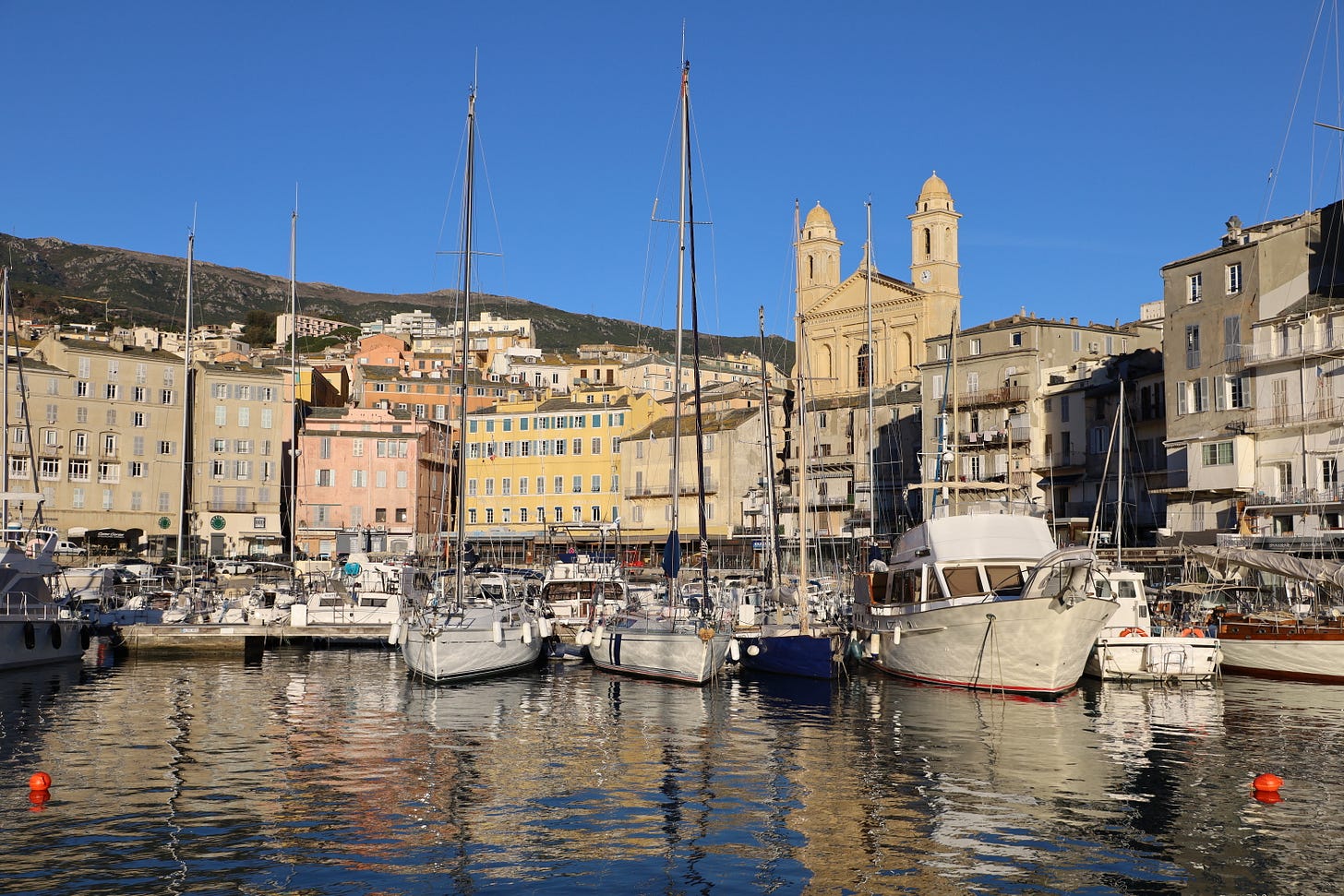
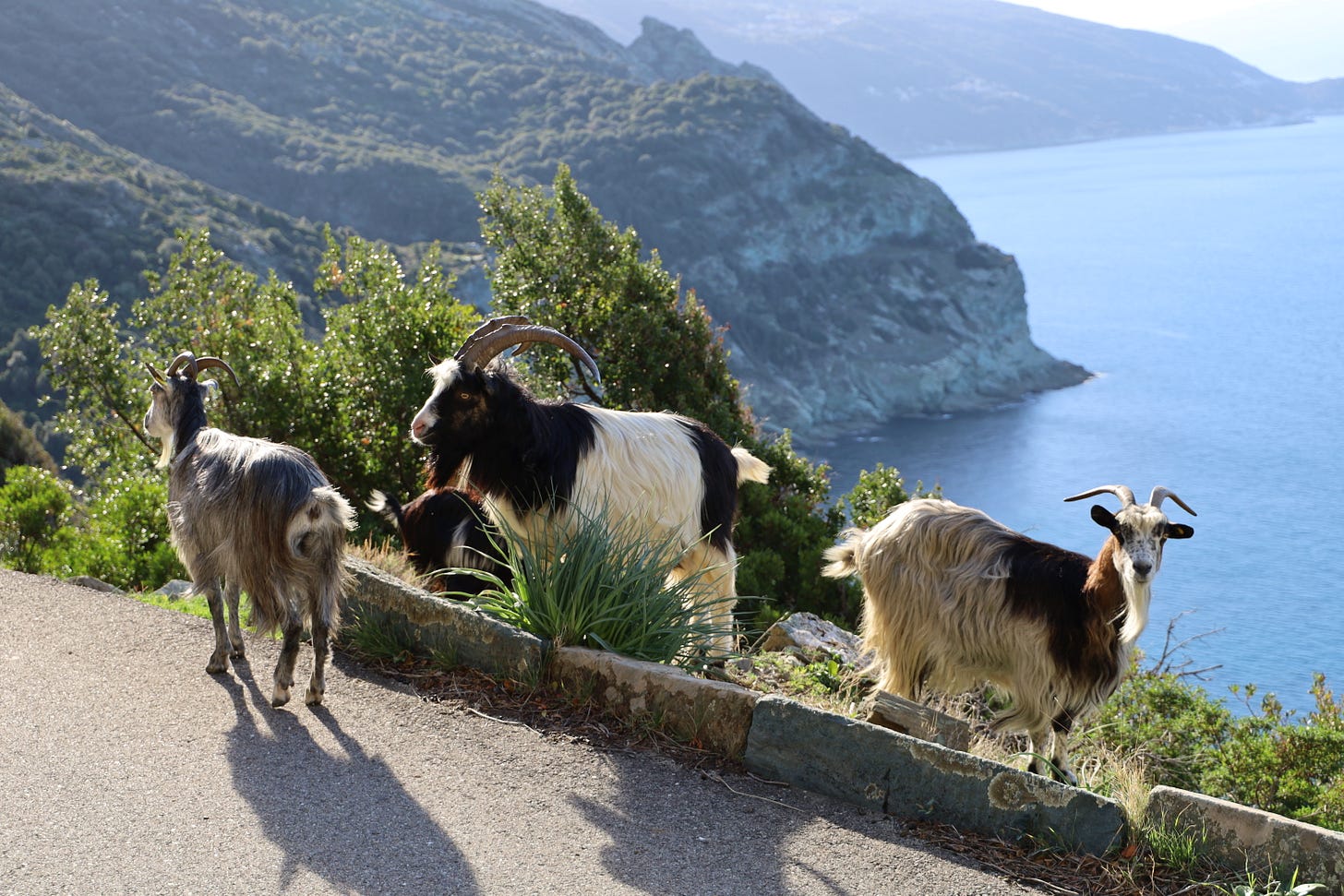
Corsica is my favorite!!!!!!!!!!!!!!!!